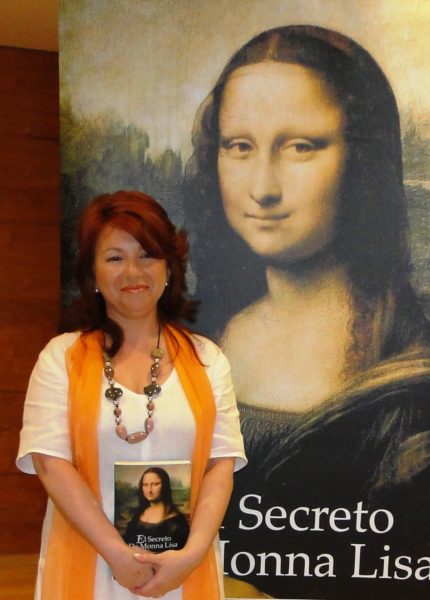Dolores Garcia Ruiz’s research shows that the silk garments of the model of the world’s most famous portrait are intimately related to Valencia and its silk art, and would not have looked the same nor been as colourful without the decisive role of the Valencian Luis de Santángel in the discovery of America.

In March 2020 the study carried out by researcher and writer Dolores García Ruiz on the silk garments of Leonardo da Vinci’s La Gioconda and its close relationship with Valencia was aired publicly.
As Dolores García explained, the Mona Lisa, Leonardo da Vinci’s emblematic work, would not be the same without the Valencia of the late 15th century. Nor would it be the same without the decisive role played by Valencian merchant Luis de Santángel, who financed the discovery of America in 1492, which was a revolution in hitherto unknown dyes. Without the silk craftsmen of Valencia and without Santángel, whose bust can be seen in Valencia’s Alameda, the garments on the model of Da Vinci’s painting would hardly have looked the same, and would have been considerably different in both colour and meaning for their time.
Dolores García’s research, which is collected in an essay that will be published shortly, reveals that La Gioconda is much more than a portrait of a woman with which Da Vinci reaches the highest levels of pictorial perfection: it is a true crossroads between the silk routes from the East, the Old World of Europe and the New World that opens up with America. Dolores García Ruiz lives in Torrent (Valencia). Her first novel was the best-seller El secreto de Mona Lisa. Her first essay, The Hidden Face of Da Vinci, was added to the library of researchers at the Louvre Museum in Paris. Because of her research work on Leonardo da Vinci, she is considered to be one of the most knowledgeable experts in the field.
